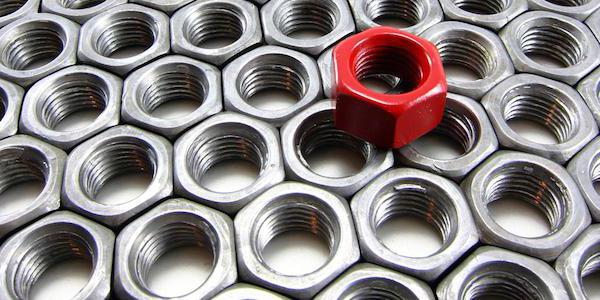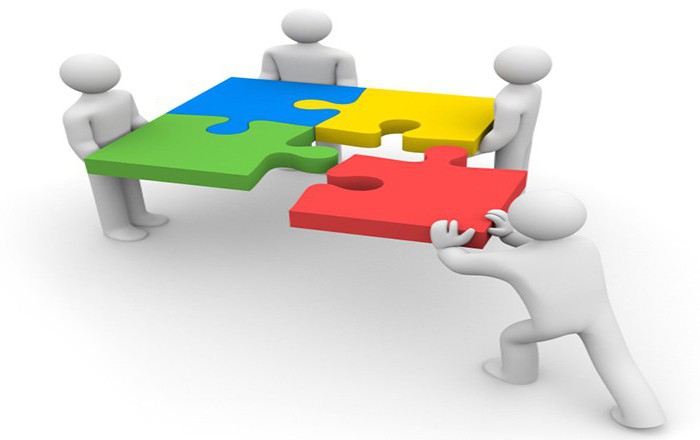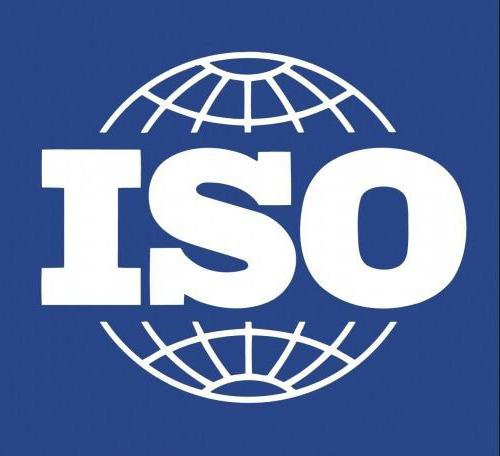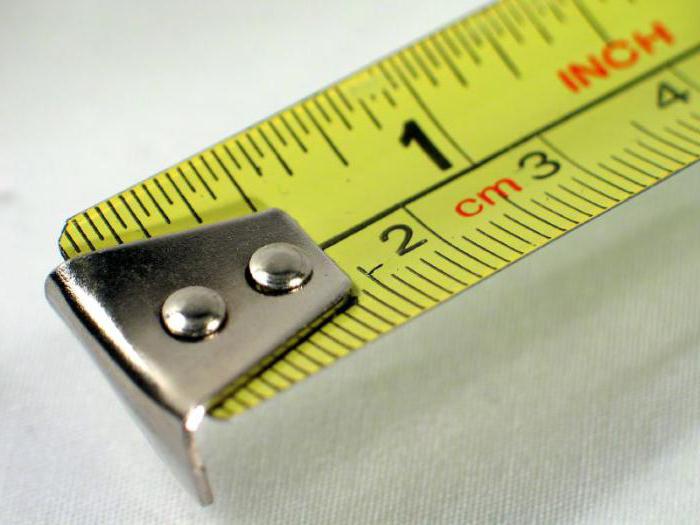An important tool that determines the quality of products and services, ensuring labor safety, is standardization. Thanks to the approved norms and regulations, in which the qualitative and quantitative criteria of the object are concluded, an optimal degree of orderliness is achieved in individual areas of production. Services, goods, work, and other reuse and reproduction processes are objects of standardization. It is for them that normative documents are developed that define general rules, principles and characteristics for various types of activities.
Events leading to the creation of a standards system
The principle of unification during construction more than five thousand years ago was known to the ancient Romans. Already at that time, people began to use bricks of the established sizes, and later uniformity of pipes of the same diameter was realized when laying a water supply system. Then, with the improvement of human labor activity, the objects of standardization began to expand.

The period from the 4th to the 18th centuries can be considered the era of great achievements in the field of unification. It was at that time that they standardized:
- one inch equal in length to three grains of barley;
- core standard, consisting of a brass rod of an octagonal cross section;
- railway gauge;
- French Leblanc weapon locks, which were suitable for all types of weapons manufactured at that time;
- caliber guns, size 13.9 mm;
- mounting thread system;
- calibres for cannonballs.
Further streamlining of standardization objects required the creation of organizations that contribute to ensuring the uniformity of measurements, the rational use of resources and the international exchange of services and goods.
So, in 1875 the International Bureau of Weights and Measures appeared, which to this day, according to the Metric Convention, creates conditions for the unity of metrological standards for different countries. The year 1946 was marked by the emergence of ISO, an international organization dedicated to the development and production of standards. And the USSR was one of the founders of this society.
In Russia, the first law defining regulatory documents on consumer protection was adopted in 1993.
The main tasks and goals of the process
The evolution of labor has identified the main components of the unification process - these are objects and subjects of standardization. The essence of this historically established activity is the approval of mandatory and recommended characteristics and norms for reusable objects by standardization entities.
Why is this necessary? The fact is that all those rational norms reflected in standards, instructions, and technical conditions help to unify goods and services from different manufacturers according to quality criteria. And this contributes to: adaptation of the national product on the international market, since state-level standards comply with international standards, and ensure safety for consumers' health.

Requirements for production processes, products, control methods, packaging and labeling rules, services, management procedures, measuring operations - these are objects subject to unification. And the goals of standardization for each component of the process are the same:
- development of scientific and technological progress;
- facility security and human life;
- integration of the national product into the world market;
- rational use of resources;
- interchangeability and compatibility of hardware;
- settlement of judicial issues;
- ensuring the competitiveness of products.
Principles of Theory of Standards
Like any science, standardization is based on certain provisions:
- Voluntary use of standards.
- Development of a national model document based on international standards.
- Balancing the interests of participants in the development, manufacture, provision and consumption of products / services.
- The main objects of standardization should contain clear optimal characteristics and requirements, without assuming ambiguous interpretations.
- Compatibility of elements. That is, each object is considered as part of the system. For example, an insole of size 36 is suitable for shoes of standard length corresponding to a specified value.
- Accepted standards must be dynamic, they must adapt to the ongoing changes in scientific and technological progress.
- The effectiveness of activities that help to achieve an economic or social effect.
- Complexity determines the standard of the finished product, subject to the requirements for its component parts (raw materials, parts, assembly units).
- Objectivity. This principle allows you to check the model requirements for the object with technical or other objective measuring instruments (chemical analysis methods, instruments).
Standardization Categories
The state standardization system (hereinafter referred to as the GSS) is a combination of five categories of standards: state, industry, standards for enterprises, information all-Russian classifiers and scientific and technical documents.

State standards are subject to mandatory compliance by all organizations and enterprises of the country within the scope of their influence.
Industry standards are developed for a specific production. Industry objects of standardization are services, work, products, general technical systems of a particular sphere of production, for example, chemical or agricultural. The standards of enterprises that are established by an economic entity for a particular type of work, production of goods or provision of services have an even narrower scope.
Innovation activity is regulated by the standards of public organizations, and information - by the use of appropriate classifiers.
Classification of standardization objects
| Unification Objects | ||
| Services | Products | Production
the processes |
| tangible and intangible (social);
standards of general technical conditions for a particular group of services: labeling, quality, transportation, etc. |
raw materials;
finished goods; standards of general technical conditions for a particular group of goods: labeling, quality, transportation, etc. |
development;
implementation; storage; repairs; manufacturing operations; management processes |
Depending on the level at which requirements are put forward for objects, the following types are distinguished:
- Objects of state standardization. These include: large-scale production products, export goods, calibration schemes, standards of units of physical quantities, state tests of measuring instruments.
- Industry objects of unification are serial production products, devices, equipment and machines.
- Reference objects at the enterprise: assembly units, individual parts; standards for product design; internal quality management system; documented procedures for the purchase of raw materials.
International practice
The main international body that unifies objects in all fields of activity except electronics is the International Organization of ISO.The objects of standardization for the production and creation of electronic devices belong to the prerogative of the International Electrotechnical Commission (IEC), which is an ISO partner.

The main international body consists of 157 national unification organizations from different countries. The representative from Russia is the Federal Agency for Metrology and technical regulation. The main objectives for ISO are:
- keeping up international trade;
- achievement of one level of product quality by different countries;
- ensuring the interchangeability of elements in complex products;
- interchange of scientific and technical information between the participating countries for the development of the production process.
Objects of international standardization of the total share of the organization’s interests are headed by three leaders: mechanical engineering (29%), chemistry (13%), non-metallic materials (12%). Standards are also being developed in the field of information technology, agriculture, construction, special equipment, the environment, health and medicine. One cannot but mention the growing field in international standardization - the provision of services.
The list of organizations implementing unification issues at different levels
As mentioned in the classification, different unified objects are distinguished by the level of requirements and the scope of distribution. And the subjects of standardization are similarly referred to classification are divided into different levels.
| Subject level | List of legal entities and individuals for standardization |
| International | ISO; IEC European Organization for Quality |
| Interstate | Technical Committee (MTKS);
European Electrotechnical Commission; European Organization for Standardization; Eurasian Council for Metrology, Certification and Standardization |
| National | Rostekhregulirovanie;
technical committees, which are voluntary public associations of interested enterprises for the development of standards at various levels; territorial bodies; scientific and methodological centers |
| Organizational | departments and laboratories for the unification of organizations and societies
standardization services for enterprises and organizations |
Methods for achieving goals
The tool that defines the methods for achieving the goals of standard-setting activities is called the method. The list of widely used tools in the work:
- ordering of objects;
- parametric techniques;
- product unification;
- A complex approach;
- aggregation and leading requirements.

Since each of the methods is based on the establishment of reference characteristics of products, methods and objects of standardization are inextricable components of the process of determining model characteristics and norms.
A universal method that systematizes the variety of products is the ordering of objects. It includes selection, systematization, typification, optimization and simplification.
An example of parametric standardization is any quantitative characteristic of an object (size range). The unification method is used to bring standardization objects of the same functional purpose to uniformity by establishing a rational nomenclature and common characteristics.
The method of aggregation in the development and adoption of standards is based on the design of equipment, instruments and equipment from standardized units that can be used to create a new type of equipment.
The integrated method involves the approval of interrelated product requirements. Advanced standardization allows to achieve even better indicators of the quality of the object in relation to the achieved requirements.
Characterization of standardization objects: example
Technical specifications, regulatory documents and standards contain indicators that are the reference characteristics of a particular object.Using pasteurized drinking milk as an example, the main physicochemical parameters corresponding to quality products will be considered. GOST31450-2013 is the main document that defines the requirements for a dairy product.

The density of milk with a fat content of 0.5-1% should be at least 1029 kg / m3. Mass fraction of protein is determined at the level of 3%. The acidity of the product is 21 ° T. Dry skim milk residue should not be less than 8.2%. The temperature of a high-quality pasteurized product from the moment of release reaches 2-6 degrees.
In addition to the listed physical and chemical indicators, the standard also defines the requirements for the characteristics (taste, color, smell, appearance and texture) of milk. The raw material for the pasteurized product is raw milk, which must comply with GOST 31449. Marking and packaging of the finished product must comply Technical regulations Customs Union.
Indicated in GOST indicators characterizing the quality of the product are the characteristics of the standardization object, in the particular case of milk.
Conclusion
The objects of standardization are both elements of material production, and elements of an intangible nature. Activities aimed at establishing exemplary requirements for the characteristics and indicators of objects are called standardization.

The national system of standardization is a combination of national, industry standards, information all-Russian classifiers and scientific and technical documents.
Documents containing requirements for standardization objects have the corresponding designations: index, registration number and year of adoption, for example, GOST R 51121-97. If the state document is adopted on the basis of the international standard (ISO / IEC 2593) without amendments, the one adopted in the Russian Federation will be designated GOST R ISO / IEC 2593-98.
The development of technological processes, the defense capability of the state and the socio-economic development of the country depend on the level of development of this type of activity.








